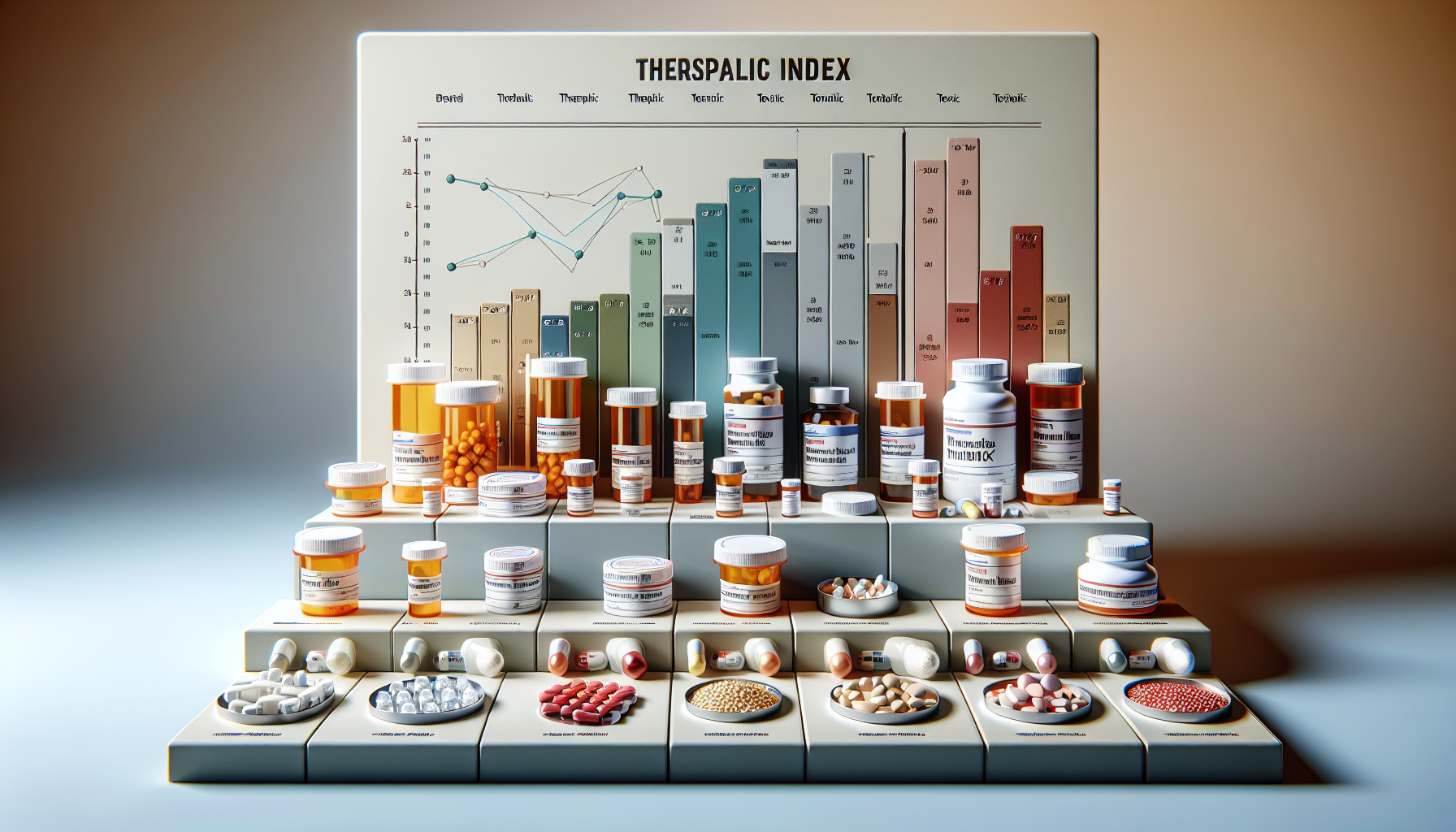The concept of the therapeutic index is a cornerstone in clinical pharmacology, crucial for ensuring patient safety and the effective management of medications. The therapeutic index, also known as the therapeutic window, is a measure of a drug’s safety. It is defined by the ratio between the toxic dose and the therapeutic dose of a medication, indicating the margin of safety that exists for a given drug. Understanding this index is vital for healthcare providers and patients alike, as it influences dosing, monitoring, and the overall management of treatment plans.
The Importance of the Therapeutic Index
The therapeutic index serves as a guide for healthcare providers to determine the appropriate dosage of a medication that can be administered safely. A drug with a narrow therapeutic window requires meticulous monitoring to avoid toxicity, while a drug with a wide therapeutic index is generally considered safer and has less risk of causing adverse effects at therapeutic doses.
For instance, medications used for cardiovascular health, such as anticoagulants, often have a narrow therapeutic index. Patients on these medications should undergo regular monitoring to ensure that blood levels remain within a safe and effective range. For more information on managing cardiovascular health and related medications, visit Avix Health’s resource on cardiovascular health.
Factors Affecting the Therapeutic Index
Several factors can influence a drug’s therapeutic index, including:
- Patient-specific factors: Age, weight, gender, genetics, and comorbidities can affect how a drug is metabolized and cleared from the body.
- Drug interactions: Concomitant use of other medications can enhance or diminish the effects of a drug, impacting its therapeutic index.
- Formulation and administration: The formulation of a medication and its route of administration can alter its bioavailability and, therefore, its therapeutic index.
- Disease state: Certain disease conditions can change the body’s response to a medication, necessitating adjustments in dosing.
Personalized Medication Management Plans
In light of these variables, personalized medication management plans are essential for optimizing therapeutic outcomes while minimizing risks. Personalized plans take into account the unique characteristics of each patient, allowing for adjustments in medication type, dosage, and frequency to maintain efficacy within the therapeutic window. For more insights into personalized medication management, readers may explore The Benefits of Personalized Medication Management Plans.
Monitoring and Managing the Therapeutic Index
Monitoring is key when managing medications with a narrow therapeutic index. This often involves blood tests to measure drug levels, as well as assessing for signs of efficacy and toxicity. Adjustments to the dosage may be necessary based on these findings to maintain the delicate balance between therapeutic effect and safety.
Educating Patients on Medication Safety
Patient education is an integral part of medication safety. Understanding the importance of adhering to prescribed dosages, the potential for side effects, and the significance of regular monitoring can empower patients to actively participate in their healthcare. Comprehensive resources on The Importance of Patient Education in Medication Management offer valuable information on this topic.
External Resources for Further Reading
For those interested in delving deeper into the pharmacodynamics of common medications and how they relate to the therapeutic index, the following external resources are recommended:
- Clinical Pharmacology Database: A specialized repository containing detailed drug information, including pharmacokinetics and dynamics.
- Patient Safety Network: An extensive platform providing research articles and guides on medication safety practices.
- Journal of Clinical Therapeutics: A peer-reviewed journal that publishes original research and reviews on drug therapy and the therapeutic index.
- Medication Safety Institute: An organization dedicated to improving medication safety and providing education on safe medication practices.
The Role of Healthcare Providers
Healthcare providers play a crucial role in managing the therapeutic index of medications. By considering patient-specific factors, potential drug interactions, and the pharmacokinetics of medications, providers can tailor treatment plans to maximize efficacy while minimizing the risk of adverse effects.
Conclusion
The therapeutic index is a vital concept in ensuring medication safety and efficacy. Through personalized medication management plans, careful monitoring, and patient education, the risks associated with medications can be mitigated. It is important for both healthcare providers and patients to be aware of the therapeutic index to foster safe and effective treatment outcomes.
For further exploration into medication safety and patient education, Avix Health provides a wealth of resources to guide patients and healthcare professionals alike. Whether it’s understanding the pharmacodynamics of common medications or evaluating the safety and effectiveness of supplements, Avix Health remains a trusted source for reliable and comprehensive healthcare information.



